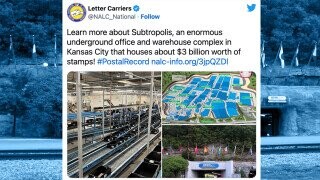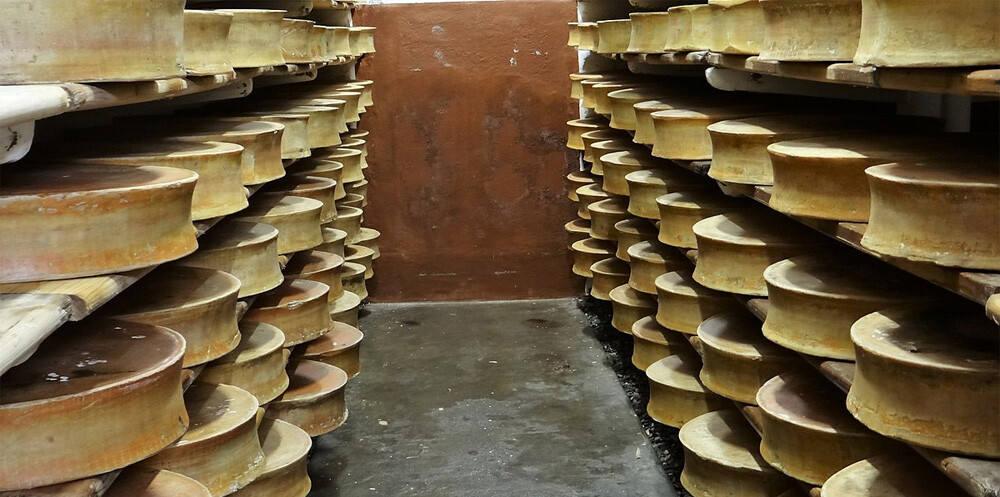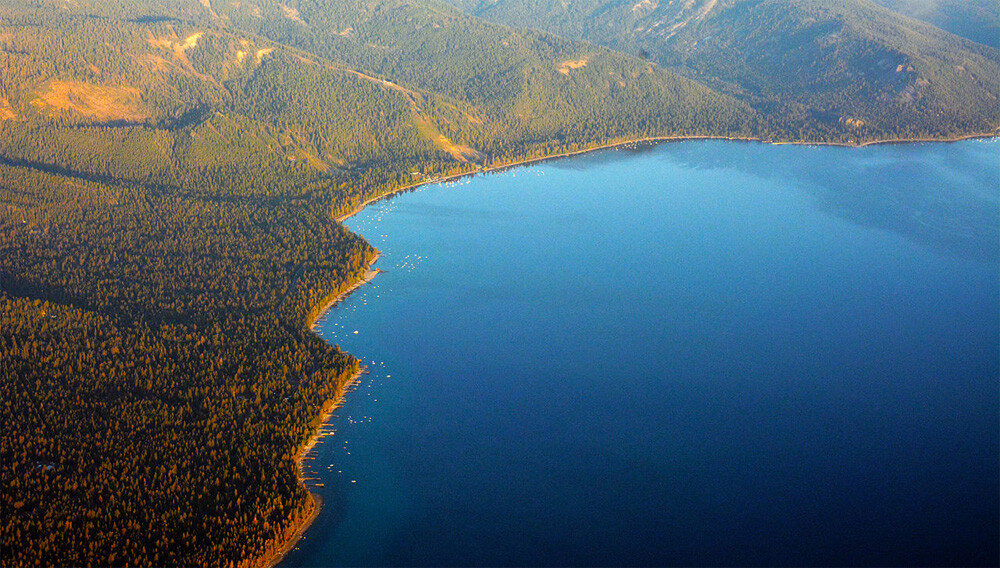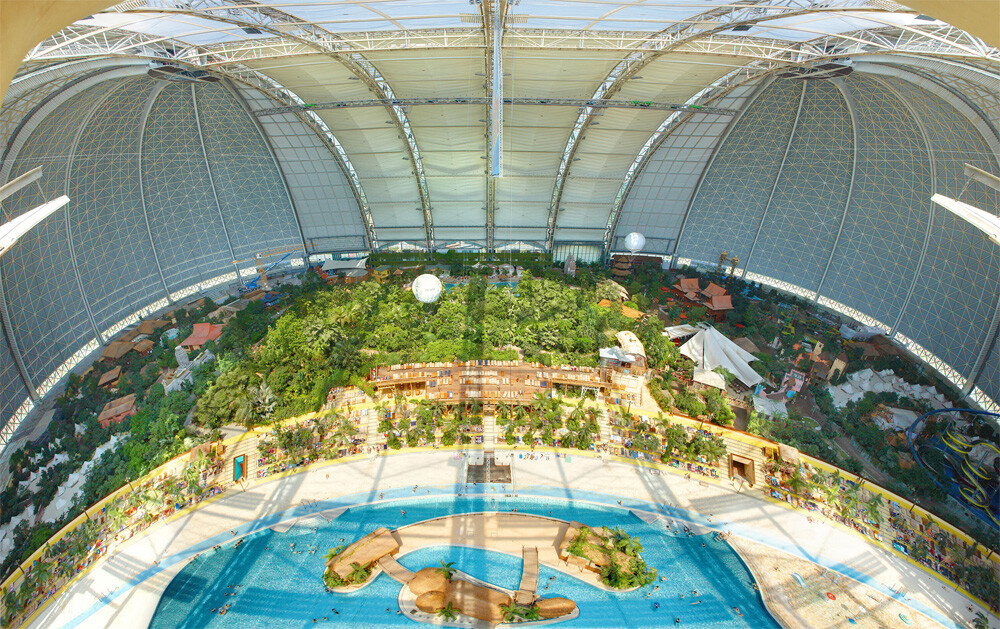5 Elaborate Mysterious Projects Carried Out Literally Underground

While you go about your daily routine, basking in the sunlight and feeling grass between your toes, know that everything you see is but one stratum of society. Below you, an entire other world operates.
No, we’re not talking about people below you in terms of economics. We’re talking about people below you in terms of elevation. We mean the dwarves, the Morlocks and the mole people. Not only are they digging away at mines to release the Earth’s bounty, but they’re also carrying out all kinds of other operations that you’d never think had any reason to go on below the surface.
Iron Mountain
Don't Miss
The storage company Iron Mountain takes its name from its original main storage facility, which was a limestone mine in Pennsylvania. Iron Mountain is now a huge, international corporation, and hundreds of companies worldwide store stuff with them, whether physical objects or just data. Naturally, they now have various facilities, including many warehouses located aboveground. But they also still use that 2-million-square-foot mine for storage even today.
It’s huge. It has a consistent climate. It’s secure. Earthquakes that could level buildings wouldn’t be able to shake these caverns. It’s a great place for storing precious paintings, photo negatives or audio recordings.
It’s also a great place for storing paper, and here’s where things get weird: The government’s Office of Personnel Management (OPM) uses the Iron Mountain cave for storing paperwork for retirees. These aren’t precious documents whose physical essences need preservation. They’re merely printouts with stuff written on them, printouts that need to be processed. Handle the whole operation electronically, and we could dispense with the paperwork altogether. The government continues to do it all on paper anyway, trucking reams into the Boyers mine and then getting around to processing the applications after an average of 60 days.
Should the OPM digitize the system? Obviously, said everyone, all the way back in the 1980s. They said it again every few years since then when anyone took a look back at what was going on at Iron Mountain. But no one’s gotten around to making the switchover, so all papers still go to the mine, to be shelved and sorted by trolls and balrogs.
SubTropolis
Here’s another limestone mine that was converted to storage space, and this one dwarfs Iron Mountain. SubTropolis, in a Kansas City mine, spans more than a thousand acres underground. It too keeps records for the government, and it stores a vast collection of vehicles. It also stores stamps for the postal service. You might think of caves as clammy places, but the low humidity of SubTropolis ensures that these stamps stay dry, and their glue stays inactive.
But when you have an area so massive, even vast collections of valuables don’t take up enough room to fill it all. As a result, SubTropolis turns over parts of its complex for industrial purposes. Working down there has got to be either a depressing chore or the coolest thing ever; if you know SubTropolis workers, put us in touch with them for an interview to find out. But why should a company even want to set up shop underground rather than building a factory? Simple: Because the space underground is already there.
Seriously. If you want to build a factory, or any kind of commercial space, you have to build a floor, a ceiling and walls. In a vast underground cave? The floor and ceiling are already there, so the walls are all you need to construct. As a result, rents are half as much as a surface building. It also saves hugely on utility bills, since you don’t need to heat or cool the place to keep it comfortable. That’s why, say, a company named Vanguard Packaging set up its assembly machines here.
So, there are cloud-computing companies here running servers at all times, and food companies here putting snacks in boxes. The food company also uses this underground space for aging cheeses, letting hundreds of different cheese varieties mature in flavor underground.
But somehow, that’s not America’s craziest underground collection of cheese...
The Strategic Cheese Reserve
Just the other day, we were telling you about how the government sometimes stores vast quantities of commodities to maintain high prices. The dumbest of these might have been the Strategic Raisin Reserve, but the government has maintained a National Cheese Stockpile as well. The cheese stockpile is funnier than the raisin one because “cheese” is a funny word, but it also had a bit more logic behind it.

Dairy really is a huge and important industry in the U.S., creating a national interest in stabilizing milk prices. Starting in 1949, the USDA bought cheese when prices were low (during the spring glut) and sold them off when prices rose. By 1981, they had a couple billion pounds of this surplus cheese, and they stored a few dozen million pounds of it underground in — you guessed it — more abandoned limestone mines, including a cave network in Springfield, Missouri.
The cheese reserve’s goal has changed over the years. Now, it’s no longer expressly about stabilizing prices, even if that’s a side effect. Now, it’s about food security for the hungry. The USDA purchases cheese, stores it, then releases some to food banks and to other food-assistance programs. This started with the Reagan administration, using the stockpile to give schools “government cheese.”

Today, the National Cheese Stockpile still weighs in at more than a billion pounds, but it’s no longer a government resource. Now, the “cheese stockpile” refers to the cheese that the dairy industry themselves keep in storage. And while 1.3 billion pounds sounds like some impossible amount, the result of cheese accumulating over decades, keep in mind how many millions of people live in America, and how much cheese they eat. The stockpile only adds up to around 10 percent of the country’s annual cheese consumption.
Maybe we need to double that stockpile, or even triple it, just in case.
The World’s Biggest Tank
Our final two stories for today are both about natural gas. You won’t be shocked to learn that natural gas comes from underground, but we still think you might find these two aspects of the process very weird.
First up, where do you think naturas gas is stored after we extract it? Some winds up in cylinders and in pipelines, but beyond that, we have so much more gas that we must store between when we get it out of the ground and when people need it. We measure natural gas in Bcf, or billion-cubic-feet. At any given time, we might need to store a couple trillion cubic feet, a volume bigger than pretty much anything we ever have to think about.

Suppose we wanted to build tanks large enough to hold this gas. Consider the most spacious single building ever made, the Aerium in Germany, which was built to manufacture airships and now contains an entire theme park:

You’d need more than 10,000 structures that size to store all this gas. While constructing them using conventional means wouldn’t be impossible, it sure wouldn’t be easy. So what we do instead is carve out that space underground. We pump water into massive salt deposits, the salt dissolves and that leaves huge caverns larger than any building. The result is kind of like sticking cheese in a cave, but rather than walking in and plopping stuff on shelves, the entire cavern is the storage tank.
We’ve previously told you about the plans to create such salt domes to store hydrogen gas (and we joked about how much fun it would be to light a match and watch it all explode). But this isn’t some new experiment people are trying out to take care of future energy needs. It’s something we already do with great success right now.

The only downside of making these reservoirs out of salt is that it gives us enormous volumes of brine, which we don’t know what to do with. We can use it for pickling fish, but a man can only stomach so much herring.
Project Rulison
The other half of the natural gas business — extracting the gas — is also hard, especially when the stuff is far out of reach. Today, you might know of one method of getting resources like that to flow more freely: fracking. In 1969, Colorado tried a more ambitious version of this. They were going to set off a nuke, underground.
The nuclear bomb would be 40 kilotons (the Hiroshima nuke blasted just 15 kilotons of energy). For safety’s sake, they ordered the whole area evacuated, but a few determined activists stayed put. So long as they remained there, they reasoned, there was no way the scientists would go through with it. Like most activists, they were wrong. The team detonated the nuke all right, letting loose a mini earthquake.

The explosion did not net any usable natural gas. In fact, any gas loosened by the nukes was radioactive, and burning such fuel on your kitchen stove would be inadvisable.
The government tried a couple more similar tests anyway, but in a sense, the activists won in the end. They passed an initiative called the Colorado Detonation of Nuclear Devices Amendment. That means today, it is officially illegal to detonate a nuke in Colorado unless you first get approval from voters. If you’ve been planning to set off any nukes yourself in Denver, be sure to complete all electoral measures beforehand, or else you may have to pay a fine.
Follow Ryan Menezes on Twitter for more stuff no one should see.